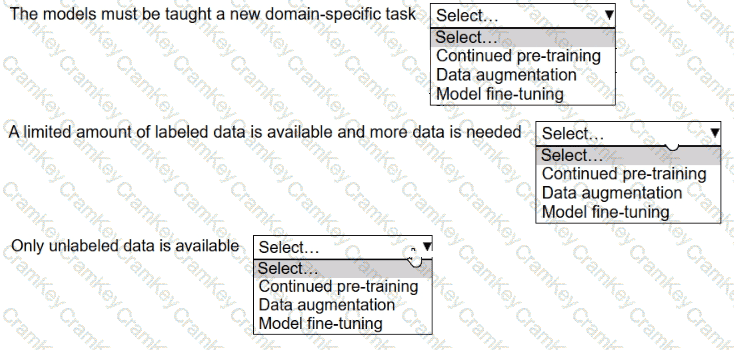| Exam Name: | AWS Certified AI Practitioner Exam | ||
| Exam Code: | AIF-C01 Dumps | ||
| Vendor: | Amazon Web Services | Certification: | AWS Certified AI Practitioner |
| Questions: | 289 Q&A's | Shared By: | akram |
A company wants more customized responses to its generative AI models' prompts.
Select the correct customization methodology from the following list for each use case. Each use case should be selected one time. (Select THREE.)
• Continued pre-training
• Data augmentation
• Model fine-tuning

An ecommerce company wants to improve search engine recommendations by customizing the results for each user of the company's ecommerce platform. Which AWS service meets these requirements?
A company uses a third-party model on Amazon Bedrock to analyze confidential documents. The company is concerned about data privacy. Which statement describes how Amazon Bedrock protects data privacy?
A company wants to use Amazon Q Business for its data. The company needs to ensure the security and privacy of the data. Which combination of steps will meet these requirements? (Select TWO.)